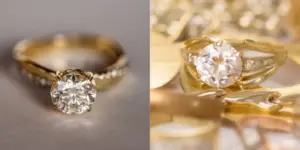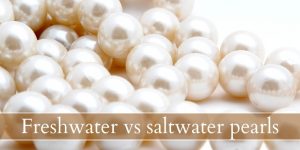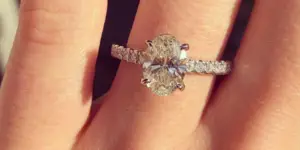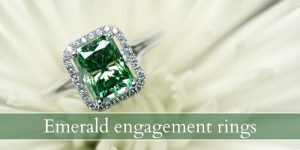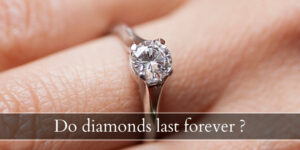Rhinestones don’t have the most amazing reputation, at least nowadays. Often when you hear rhinestones you think of cheap costumes with plastic ‘jewels’ glued on, but it wasn’t always like this. And the real, actual rhinestones made and sold today are not always those little plastic beads.
True, ‘rhinestone’ applies to a wide variety of faux jewelry, but the word has a much more impressive (and prettier) backstory, and meaning. Let’s take a look at what rhinestones are, and how they came to be..
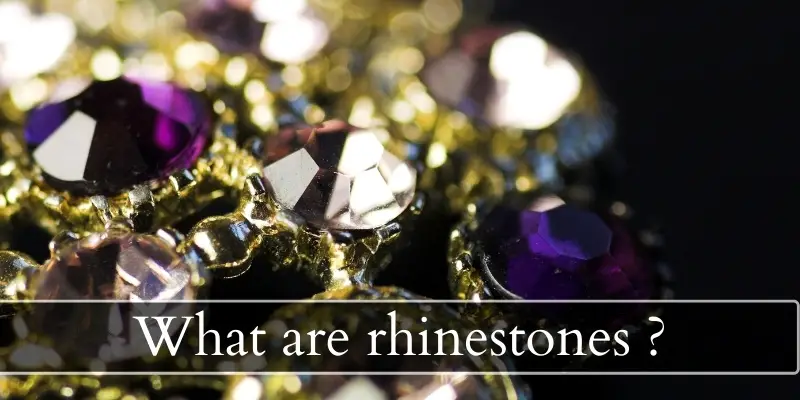
What are rhinestones ?
Today’s rhinestones are a type of lead glass that is commonly used as a gemstone or diamond simulant in more affordable jewelry. The word ‘rhinestone’ can also apply to plastic jewels that are applied to costumes, though it mostly applies to better made lead glass beads that are meant to resemble actual gemstones.
The original rhinestones were actually small quartz crystals found on the Rhine riverbed. These shone brightly as they had various small imperfections and were very small in size, producing a dazzling effect. They could be used in cheap jewelry and they became very popular because of this.
Lead glass was already a thing since ancient times (plain glass that was melted and then infused with lead to get a better sparkle), so one day in the 18th century an Alsatian jeweler by the name of Georg Friedrich Strass had the idea to coat the back of this glass with metal powder. That was the basis for today’s glue-on rhinestones. They were known as strass jewels, and in Europe rhinestones are still known as strass.
However the lead glass rhinestones we know today are the result of a different process. Instead of applying metal powder only on the lower part of the rhinestone, companies now coat the entire glass in a very thin film of metal powder. It’s permanently stuck to the glass, though in some cheaper versions it can be scraped off.
Are rhinestones gemstones ?
No, rhinestones are not gemstones and they can easily be distinguished from real gemstones by a jeweler. Rhinestones are generally cut into a something resembling a rose shape, which itself resembles an upside-down diamond cut. A flat back with a few facets pointing upwards, a and then a flat table.
You may find rhinestones cut into various shapes – squares, hearts, triangles, circles, anything you like – but they will always have the same cut style, with a flat back and just a few facets with a flat table.
Gemstones on the other hand come in various cut styles, and a rose cut (the only cut resembling a rhinestone cut) is pretty rare.
Read also: What Are Salt And Pepper Diamonds ?
Are rhinestones expensive ?
Rhinestones are not expensive, however their cost does add up if you intend to use many. A single rhinestone may be as little as 50 cents or as much as $2, depending on their size or grade. However when you compare these to gemstones of the same size, the price difference is steep.
If you’re trying to work out the cost of a dress after applying rhinestones, keep in mind that each and every stone needs to be applied individually. That is time consuming and someone has to do it, so you’re also paying for manual labor.
Because rhinestones are essentially just lead glass, no, they are not expensive. You can buy them in bulk and you can get them individually. The multicolored or color-shifting rhinestones are always more expensive since they’re prettier and have a slightly different coating.
Some rhinestones can be sewn on, and they have two small holes at either side to set with, while some can be glued onto clothes or jewelry, and some can be set with prongs. There is no real price difference between the three versions.
Do rhinestones fade ?
No, rhinestones do not fade in color but they may get grimy and thus lose their shine. This can be easily fixed by wiping the rhinestones clean, or if the rhinestones are fixed on clothes you can try machine washing. Opt for a gentle wash, and do not tumble-dry. This works best for sew-on rhinestones. If they are glued on some may fall off, in which case we recommend dry cleaning.
Costume & beauty rhinestones
There are different rhinestone companies you can choose from, though two of the most prominent are Swarovski and Czech crystals (Preciosa). Both produce outstanding rhinestones and are common on designer jewelry, clothes, bags, and may even be found on some household items, like bedazzled espresso machines and so forth.
Most rhinestones can be easily applied to anything you like, as long as you can sew them on, glue them on, or attach them via a tiny metal hoop. These rhinestones come in different shapes and sizes, ranging from the smallest at 2 millimeters all the way to 20 mm.
If you’re wondering which is best for you particular case, we recommend you take a look at your project. A one-time costume may not suffer from cheap glue-on rhinestones. But something you’re going to wear multiple times, be it costume or jewelry, you need a better quality rhinestone company.
In general lead glass or crystal rhinestones are more expensive, but they last much longer, they sparkle better, and are made of more durable material. They’re also heavier than plastic or acrylic rhinestones, which means you finished piece may not be as light or comfortable as you initially expected.
Read also: What Is Druzy (Druse) ?
How do I know how many rhinestones I need ?
You should measure your project – shirt, bag, phone case, whatever you’re working on – and get a rough area measure. Then divide that by how large you’d like your rhinestones to be, if you want them all the same size.
If you’re going for bigger rhinestones with smaller ones to fill in the gaps you will have a harder time measuring this, because there are a lot of gaps.
We recommend buying more rhinestones, rather than fewer. This way you can definitely finish your project, instead of having to order another set and risking both delaying the project and not finding suitable rhinestones.

I’m the main author for jewelrymaterialguide.com. I started this site after we did tons of research before our wedding and noticed that there is information about rings, jewelry, and so on that is really hard to find on the internet.

